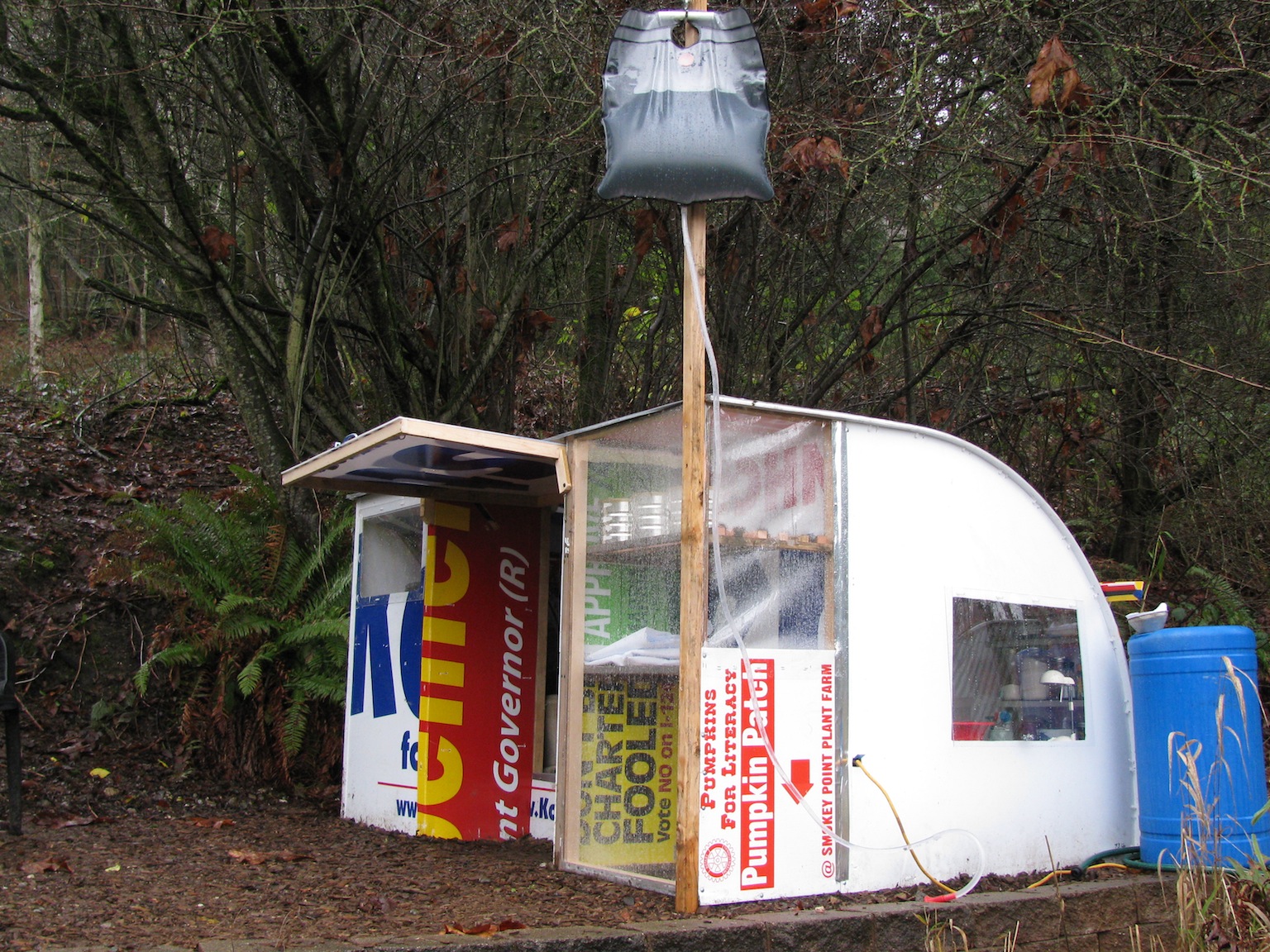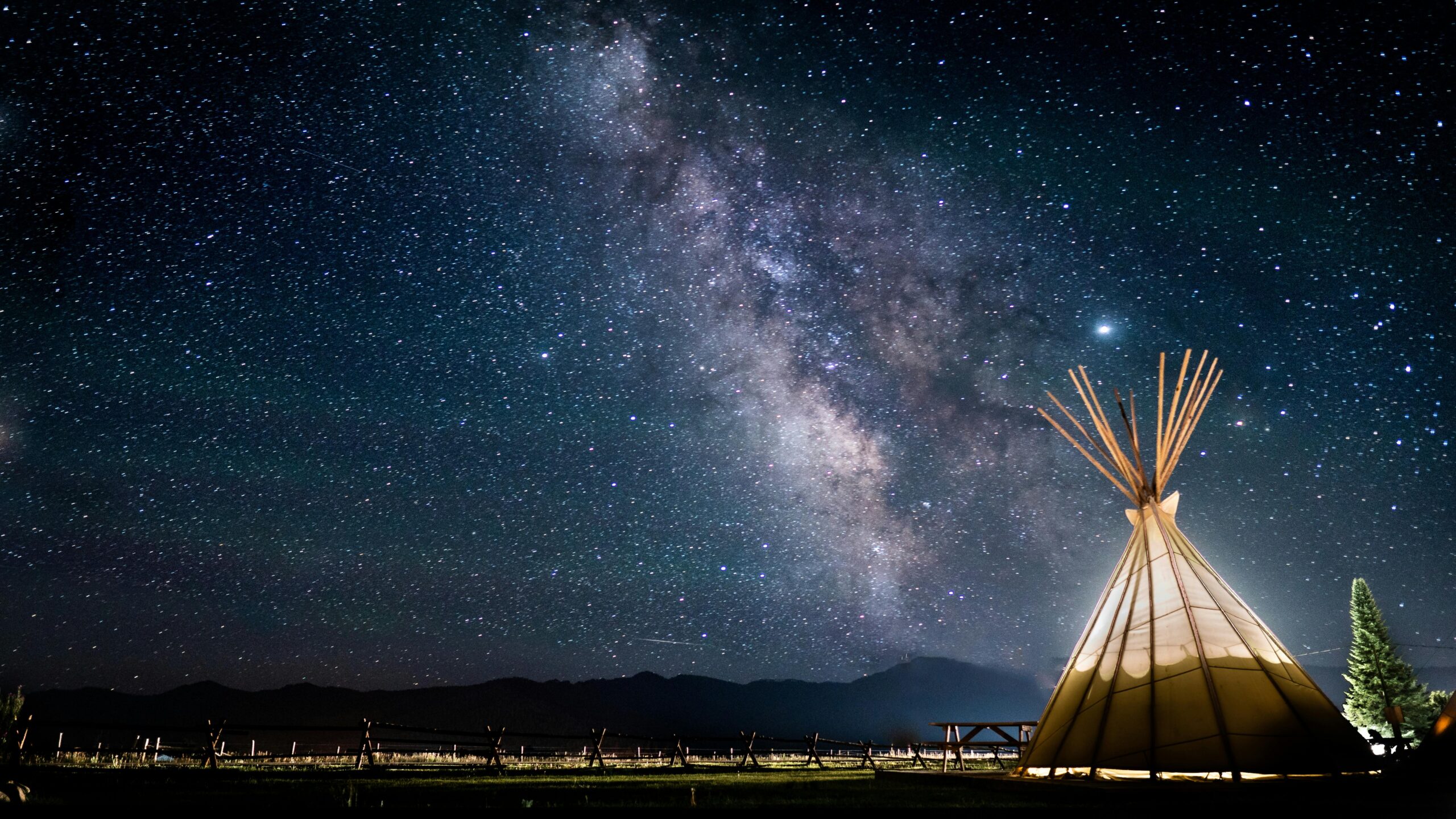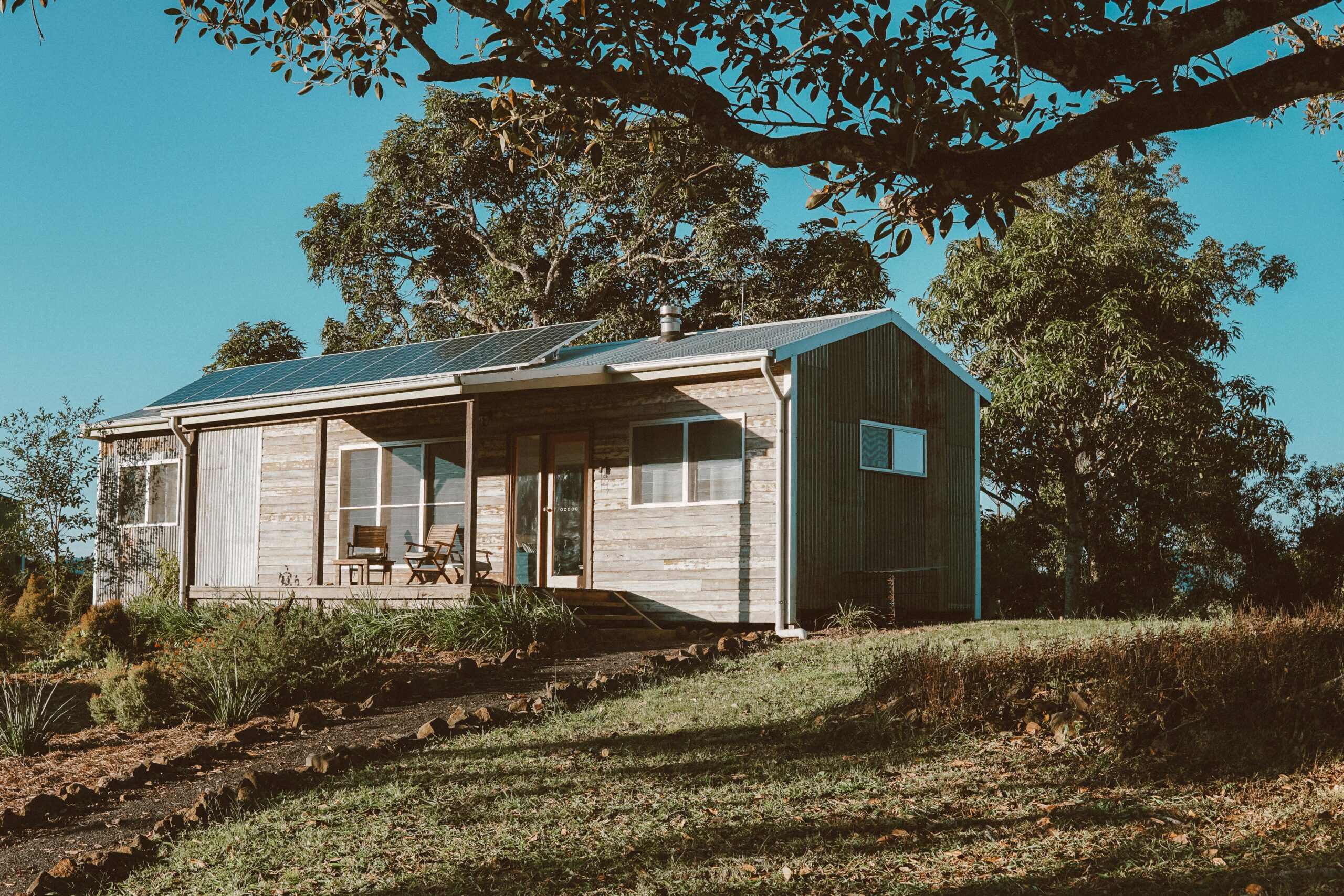Believe it or not, there are modern people intentionally living full-time in canvas tents, yurts, and teepees. For some, it’s a way to live on their land while they slowly improve it and save up for or build a house themselves. Others are just called to a nomadic lifestyle and they find that a tent of some sort suits them better than a camper.
One thing you will notice is that almost all of the structures featured below are canvas. Canvas is a long-lasting material, especially if you take care of it. Even constantly exposed to weather, you can expect a well-made canvas tent to last for several years–time enough to get a more permanent structure made for yourself.
I have never tried living long-term in a tent, but my late husband and I did medieval reenacting in a large marquee wall tent for a week at a time for years. We started with a 12×12’, but later upgraded to a 14×14’. That sounds like a small upgrade, but inside, it felt like we were living in a Wal-Mart. We had so much more space. We had a full-size bed, pantry shelving, a place for the cooler, a clothes rack, desk/dressing table, a chair, and usually a propane heater. The clothes we didn’t hang up, we kept in storage bins under the bed. And a chamber pot hidden under the bed meant we didn’t have to go outside in the dark and the cold or rain to a porta potty. I can attest that canvas tents are far superior to modern tents.
Paul Elkins is back—this time with a stationary shelter made from his favorite material, plastic cardboard political signs, and some strips of wood. If you can get the wood you need from pallets, then you should be able to make a shelter like this for $0 after the next election.

If you build it to the dimensions of a tow trailer, one person could probably lift it up and put it on a tow trailer by himself to take it to a new location. Alternatively, you can build it in sections that bolt together and you can disassemble and reassemble it like a hard-sided tent.
Paul’s shelter lasted 5 years before he had to take it down when they moved house, so it’s clearly more sturdy than it would appear.
Paul also has a hard-sided tent that he built out of rigid insulation. This is similar in cost to a tent, since these materials can’t be found for free, but, as he points out, this provides much more insulation value than a typical tent, which can make it more livable in very hot or very cold environments.
His wife does help him a bit with putting it up and tearing it down, but it seems obvious that—provided it’s not terribly windy—he could manage it by himself if he had to.
This guy lives a semi-nomadic lifestyle in a teepee. Someone lets him live on their land during the winter, so he’s stationary for 6 months out of the year. But the other 6 months, he’s traveling with pack horses and his teepee and staying on public land for 2 weeks at a time.
This is a shelter that is quickly adapted from nomadic to stationary and back again. It’s ideal for people who don’t know how long they can stay in one location. Or, if you like the idea of being nomadic, but can’t afford a camper, or find a vehicle too cramped and claustrophobic, this is something that you can haul in a truck, but it will give you a lot more open living space than living inside the truck.
This couple lives in a yurt in Sweden, showing that pop-up shelters can still be used even in very cold climates if they’re properly insulated.
Compared to a teepee, yurts take up a lot more space when packed and are more work to put up. However, they provide a lot more living space, thanks to the walls. So, if you have a place where you can set one up for long periods of time (or permanently), and especially if there are two people living in it, you would probably prefer a yurt over a teepee.
This yurt is a slightly different design from the previous one. It has higher walls, allowing more headspace (an important consideration if you’re tall). It also has some sort of vinyl topper over the canvas. This will make the canvas last longer and it’s easier to clean (because you will get pollen, mildew, tree sap, and other things on your roof). The woman in the previous video, however, mentioned that they did not have a problem with condensation in the winter because they used wool insulation with their canvas cover and did not use a tarp, so the yurt breathed and didn’t trap condensation inside. I don’t know how this vinyl topper would affect the amount of condensation these people experience, especially as they use a gas heater part of the time. (My mother has a gas heater in her camper and she has a terrible time with condensation in the winter.) Wood heat, however, is a dry heat, and since that’s their main heat source, that may balance it out. Certainly the addition of insulation will help.
If you want to split the difference between a yurt and a teepee, consider a soulpad (or a bell tent, as some people call them). It has walls, like a yurt, but they are much shorter and do not require interior framing, making it easier and faster to take down, pack up, and move if you have to change your location every few weeks.
This couple have made some upgrades to their tent, like putting it on a platform to stay off the wet, cold ground, they’ve added a door to make it easier to go in and out constantly, and they’ve added posts to their platform so they can tie off the ropes closer to the tent, saving space. They also mention how they fight condensation in the winter, which is useful information regardless of what sort of canvas shelter you end up with.
Are you interested in other forms of short-term shelter? Check out this post: From Camping to Home: Bushcraft Shelters as Temporary Housing. If this is a bit too primitive for you, consider these other options: Why You Should Consider Housing Alternatives


